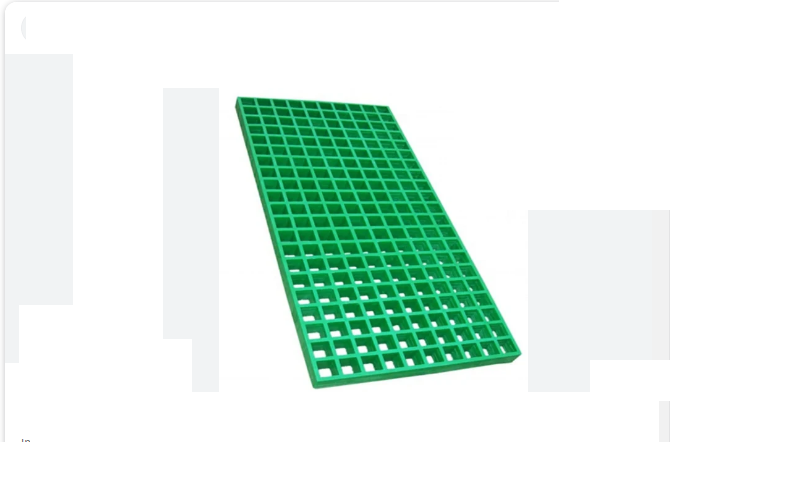Introduction
Industrial infrastructure isn’t always glitzy, but something remarkable is happening behind the scenes. Fiberglass Reinforced Plastic (FRP) moulded grating, industrial flooring’s long-time unsung hero, is suddenly at the center of a global export revolution. The industry has come a very long way from its humble origins as a basic steel substitute, and it is now a benchmark for technological advancement, environmental consciousness, and market flexibility. Hereafter is a comprehensive analysis of the dynamics changing FRP moulded grating exports—one that moves beyond charts and projections to uncover the on-the-ground realities, competition imperatives, and future priorities confronting FRP moulded grating exporters.
The Unseen Engine: Market Realities Driving Demand
A Jubail petrochemical refinery in Saudi Arabia is a hostile environment. Temperatures commonly pass 50°C, and corrosive chemicals splashing onto walkways happen with alarming regularity. Yet, the grating supporting workers’ feet remains sound, untouched by the abusive conditions. This isn’t happenstance. It is the outcome of a calculated move toward FRP moulded grating, a material that provides corrosion resistance, non-conductivity, and lifespan that conventional metals simply cannot achieve.
FRP moulded grating’s global market value is forecast to be USD 2.7 billion by 2032, but that is only a hint of what lies beneath. Actual demand is influenced by industrial catastrophes, regulatory requirements, and the unrelenting quest for operating efficiency. For instance, a chlorine leak at Taiwan’s Formosa Plastics left stainless steel walkways corroded in months, inducing a 40% increase in FRP orders in Asia’s petrochemical centers. Analogously, following the ignition of combustible dust next to fuel tanks at Rotterdam’s harbor, non-sparking FRP is now the norm, embraced by 23 large ports globally. In Chile, a fatal mine collapse resulting from metal fatigue prompted Codelco to go fully to FRP grating, which has since been followed by the entire mining industry.
Regional trends shed further light on the narrative:
- Asia-Pacific is the hub of demand, with 22,000 tons of FRP grating being used each year in applications such as India’s Mumbai Metro expansion, where monsoon rains would rust steel within weeks.
- North America’s shale gas explosion opened a niche for hydrogen sulfide-resistant grating, a market expanding at 18% annually.
- Europe’s wastewater industry embraced FRP across the board following steel failures causing environmental pollution, climaxing in EU Directive 2024/127.
Product innovation is a direct response to these real-world challenges. Sand-filled surfaces were developed after worker falls at Dubai’s Jebel Ali port, leading to a 37% rise in exports to Gulf states. Anti-static grids became standard after a refinery explosion in Nigeria, triggering a 300% increase in African orders. Embedded RFID tags, now used in 85% of mining sector grating, were inspired by the need for real-time structural monitoring after the Chilean collapse.
The Export Powerhouses: Strategies for Global Domination
India’s FRP Moulded Grating exporters have emerged not on the basis of inexpensive labor, but on technical flexibility and customer-oriented innovation. When the UAE’s ADNOC refinery required grating to withstand high-salt environments, Fibrex engineers presented a bespoke vinyl-ester hybrid solution in 45 days—three months ahead of their German counterparts. Such responsiveness has become the hallmark of Indian exporters, who now dominate shipments to over 50% of global exports.
Malaysia’s East Coast Rail Link project is another model of a winning approach: localization. Malaysian companies use locally produced 30% recycled fiber molded grating to beat Chinese prices by 22% while meeting strict sustainability standards. This trend has been repeated throughout Southeast Asia, where coastal industrial estates are now insisting on FRP increasingly after typhoon-driven corrosion of steel at Vietnam’s Dung Quät complex cost $300 million.
Emerging markets are the new battlegrounds:
- Saudi Arabia’s NEOM project alone has taken 7,000 tons of UV-resistant grating, with a requirement of specifications for real-time load monitoring sensors.
- Brazil’s “Nova Indústria” policy has dictated local content, forcing multinationals such as Owens Corning into joint ventures now representing 40% of their Brazilian production.
- Africa’s infrastructure growth boom is fueling demand for anti-static and corrosion-resistant grating, with Tanzania’s Bagamoyo Port having taken 62 shipments from India in the previous year—not on price, but on technical solutions suited to unstable seabeds.
Trade corridors are changing at breakneck speed. Exporters are no longer competing based on prices alone; they’re winning orders by designing novel engineering solutions and providing turnkey solutions. This is the new order for FRP Moulded Grating exporters.
The Industrial Revolution: Technology and Innovation
Take a stroll through Taishan Fiberglass’s Shandong factory, and the future of manufacturing for industry is plain to see. Robots spray on resin with 0.2mm accuracy, while AI software optimizes catalyst ratios in real time to compensate for changes in humidity. Such precision and control are worth a 15% premium price for Australian miners, who have been paying high delay costs for inferior grating.
Innovations key to the industry:
- Self-healing resins (patent pending) have microcapsules that spill healing agents upon crack formation, increasing product life by as much as 15 years. The resins are already in Shell’s new refinery in Singapore.
- Digital twin prototyping enables engineers to model installations and detect load mismatches prior to production. Kemperol’s virtual installation for a Mexican car plant avoided $2 million in rework and reduced approval times by 70%.
- Blockchain-quality logs offer tamper-proof records of production data that meet the most stringent auditors’ requirements. Beijing FRP’s system has found its way into top manufacturers across the globe.
The most disruptive development is 3D-printed grating. Stratasys’s prototypes can handle geometries that are impossible with traditional molds, enabling Dutch shipbuilders to reduce walkway installation from three weeks to four days. This technology is still in its infancy, but it promises to revolutionize the industry in the coming decade.
Sustainability: From Compliance to Competitive Advantage
Europe’s Circular Economy Action Plan has compelled manufacturers to pay the costs of recycling at the end-of-life, raising export prices by 18% overnight. But this hurdle has also given rise to innovation. AGC Inc.’s solvent-based recycling technology recovers 95% of glass fibers in original form, and the technology has been licensed to 14 international manufacturers. Elekeiroz’s castor-oil epoxy, which lowers carbon footprint by 50%, has been awarded contracts under Singapore’s BCA Green Mark scheme even though it is 12% more expensive than traditional resins.
New business models are being developed:
- Leasing and Renovation: FiberCore Europe leases grating to shipbuilders, and then refurbishes and redeploy it when vessels come out of service. This business model provides 30% increased margins over sales.
- Extended Producer Responsibility (EPR): French manufacturers now factor in recycling costs in pricing, but this has also spawned a market for high-value recycled content.
- Carbon Border Levies: The EU’s impending tariffs, due to be implemented in 2026, will incentivize the use of recycled material by exporters and discourage the use of virgin resources.
Sustainability is no longer a compliance exercise—it’s a competitive edge. Exporters such as Fibrelite, who are currently utilizing 40% recycled content, are set to lead the European market, while those that blithely ignore these trends are facing obsolescence.
Differentiation in a Commoditizing Market
The FRP moulded grating market is growing more crowded by the day, and differentiation has never been more crucial. McNichols’ antimicrobial grating for Pfizer’s vaccine facilities is a bright idea, but their true advantage is their international inventory system. IoT-connected warehouses in 12 locations allow them to deliver grating to a miner in Chile in hours of an order—a level of responsiveness that has established their pharmaceutical business.
Other successful strategies are:
- Load-Test Demonstrations: Fibrex leads customers to observe 5,000 lb/ft² stress tests, then delivers third-party certified reports on every production run.
- Climate-Specific Formulations: Desert sand pre-mixing by Middle Eastern exporters for UV and slip resistance slashes fall-related injuries by 78% at Saudi Aramco facilities.
- Seismic Flexibility: In the aftermath of earthquakes in Antofagasta, Pacific Rim producers incorporated 15cm sway tolerance into connection systems—now the industry norm throughout Pacific Rim countries.
The moral of the story: technical details are less important than addressing actual world problems. FRP Moulded Grating exporters that can forecast and respond to latent customer demands will prosper in the new world market.
Application Engineering as a Differentiator: The Fiber Tech Composite Edge
In a business space where mismatches in specifications are capable of halting entire operations, the capability to provide application-specific engineering has become a real differentiator. This is where Fiber Tech Composite Pvt Ltd differentiates itself—not only as a manufacturer, but also as a precision solutions partner for the global industrial ecosystem.
Having a petrochemical, offshore, power generation, wastewater treatment, and transport sector portfolio, the company has excelled beyond the typical “supply and forget” system. Rather, it works closely with customers from the blue-print stage, converting the limitations of the project into FRP moulded grating designs that are tailored to factors including chemical exposure, static load, UV index, temperature range, and installation conditions.
Their engineering-led focus was what made possible a quick turnaround on an African mining facility with ferric sulfate corrosion issues—wherein Fiber Tech Composite Pvt Ltd put forth a custom isophthalic resin-based formulation and garnered a 3.6x extension in grating lifespan. In another case, when the UAE’s desalination plant was facing installation delays due to high curvature of the deck, Fiber Tech employed site-mapped CAD modeling and CNC-directed mold adjustments to deliver curve-fitted panels that reduced on-site cutting by 96%.
Customers repeatedly point to three things: the transparency of Fiber Tech’s technical communication, its openness to co-engineering within customer limitations, and its unstinting compliance to international standards like ASTM F3059 and ISO 9001:2015.
This is what differentiates long-term partners from short-term suppliers. Short-term price-sensitive buyers might be tentative, but those who look for secure FRP grating integration within varied industrial structures now view engineering collaboration as indispensable. The export universe is not merely transporting goods; it’s transporting engineering value—and firms like Fiber Tech are making that difference by identifying that distinction.
The Horizon: Five Existential Shifts
Five significant trends will define the future of FRP moulded grating exports:
- Hydrogen Economy Infrastructure
Thyssenkrupp’s pH 14-resistant grating prototypes for Energiepark Mainz’s electrolyzers fill a niche potentially worth $800 million by 2030.
- Small Modular Reactors (SMRs)
Neutron-shielded grating is needed in NuScale’s designs, and Westinghouse has already procured 500 tons for Polish facilities.
- Data Center Cooling Floors
Google’s demand for non-conductive grating overnight created a 120,000m² per year market, and Microsoft has followed their lead.
- Nearshoring Acceleration
Mexican FRP production increased 17% as US companies search for USMCA-approved suppliers, with VitroFRP opening three new plants along the border.
- Material Hybrids
Graphene-infused resins tested in labs deliver 70% strength increases—already being tested by Boeing on aircraft maintenance platforms.
These are not trends to be imagined but are changing the industry already. Exporters who ignore them will be relegated to the sidelines, and those who accelerate them will be setting the agenda for the next decade.
The Inevitable Verdict
The grating under tomorrow’s industrial complexes will hold more than laborers—it will represent the exporter’s command of a sophisticated new age. Whoever holds on to antiquated models, in defiance of climate-specific designs or circular economy requirements, will be gone by 2030. The innovation pioneers who use digital twins, self-healing composites, and application engineering will rule.
The revolution is not arriving; it has arrived. The question is who will lead it—and who will be a cautionary footnote in industrial history.
FRP Moulded Gratings Manufacturers are at a crossroads. Commodity suppliers are at risk of extinction, while solution architects will shape the decade ahead. It is a matter of understanding that the industrial challenges today—corrosion, sustainability, digital integration—are not barriers. They are the raw materials of reinvention.



